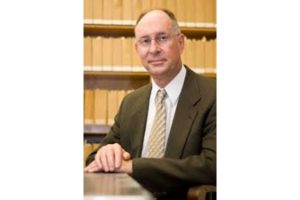
Join us for the first annual Robert C. Cammarata Lecture with Frans Spaepen of Harvard University. See the talk on Wednesday, October 2 at 3pm in Maryland Hall 110.
Abstract: Why Ultrasoft Colloidal Crystals Are Really Very Strong
Colloidal systems consist of micrometer-size spheres suspended in a liquid. They closely mimic atomic systems, in that they form similar phases (liquids, crystals and glasses) and exhibit similar dynamics, such as, for example, dislocation motion and crystal nucleation. By tracking the particles by confocal microscopy it is possible to observe these complex dynamic phenomena down to the particle, i.e. atomic level, in three dimensions and in real time.
This talk will start with an introduction to the thermodynamic (equation of state) and mechanical properties (elastic moduli, lattice defects) of hard-sphere colloidal crystals. Two aspects will be explored in detail: (i) the growth of epitaxial single crystals and the relaxation of the associated stresses by misfit dislocations, and (ii) the stress-strain behavior during the shear deformation of a single crystal. The latter experiments show that these crystals exhibit classical work hardening and a remarkably high normalized strength.
Bio: Frans Spaepen
Frans Spaepen is the Franklin Professor of Applied Physics in the School of Engineering and Applied Sciences at Harvard University. He obtained his undergraduate degree in metallurgical engineering from the University of Leuven in 1971, and his Ph.D. in applied physics from Harvard in 1975, where he has remained ever since. He has been Director of the Materials Research Science and Engineering Center (1990-1998) and of the Rowland Institute (2002-2013), and Interim Dean of the School of Engineering (2008-09). His research interests span a wide range of experimental and theoretical topics in materials science, such as amorphous metals and semiconductors (viscosity, diffusion, mechanical properties), the structure and thermodynamics of interfaces (crystal/melt, amorphous/crystalline semiconductors, grain boundaries), mechanical properties of thin films, and colloidal systems as models for the study of dynamics and defects in crystals and glasses.